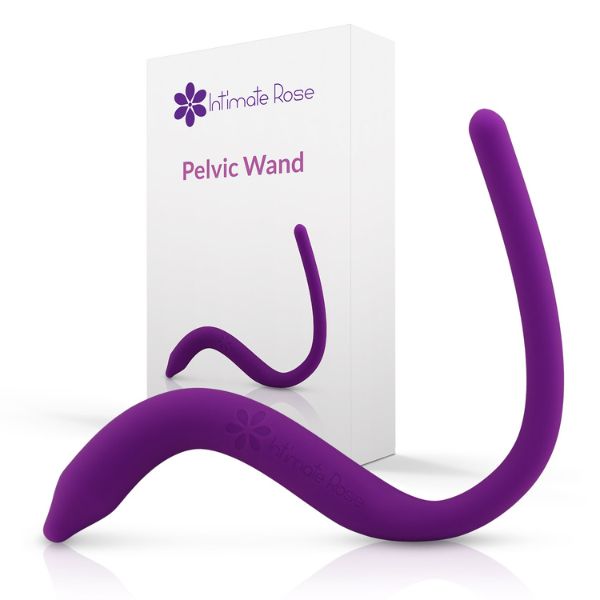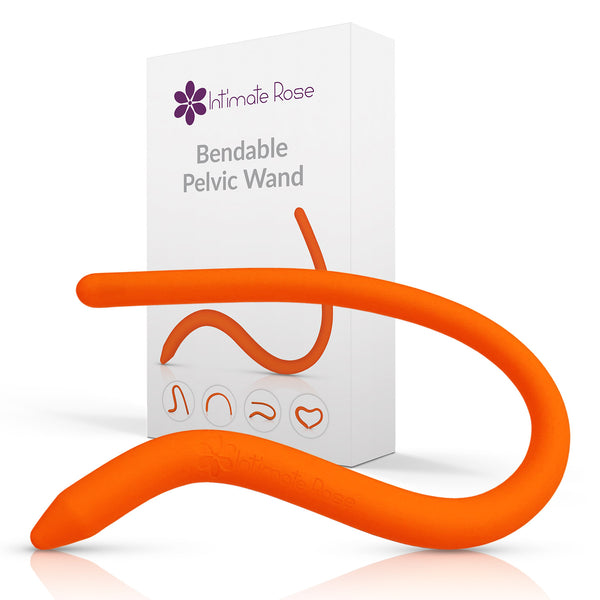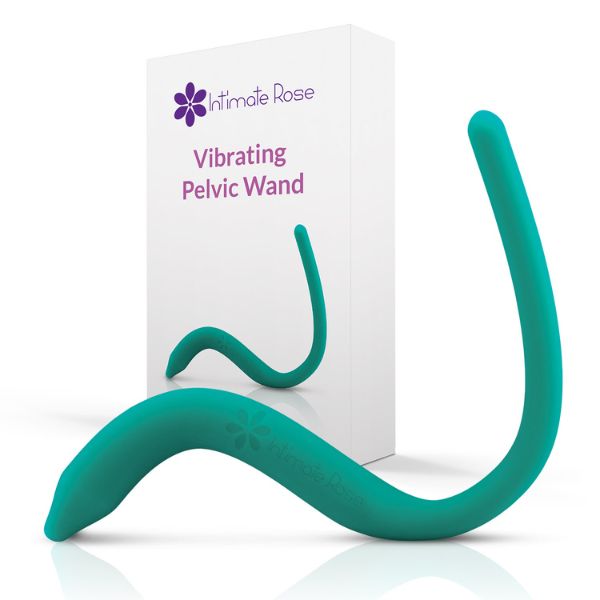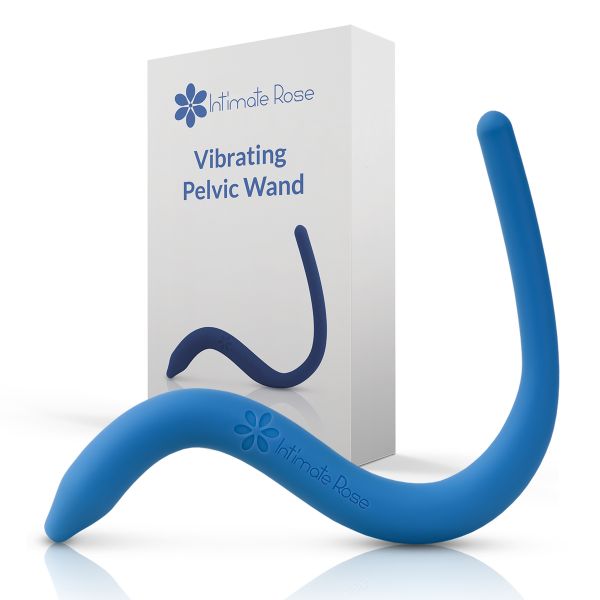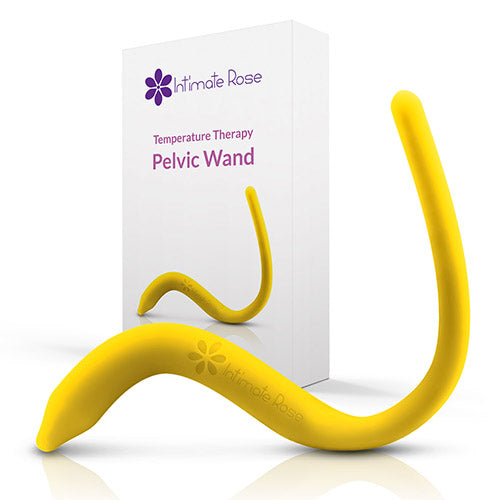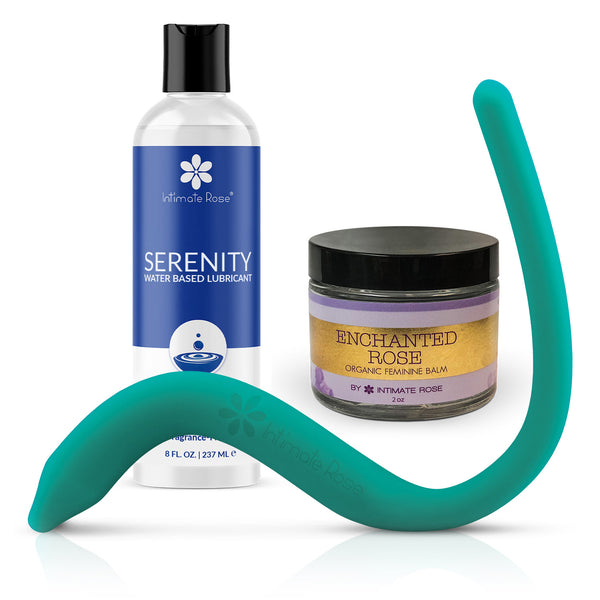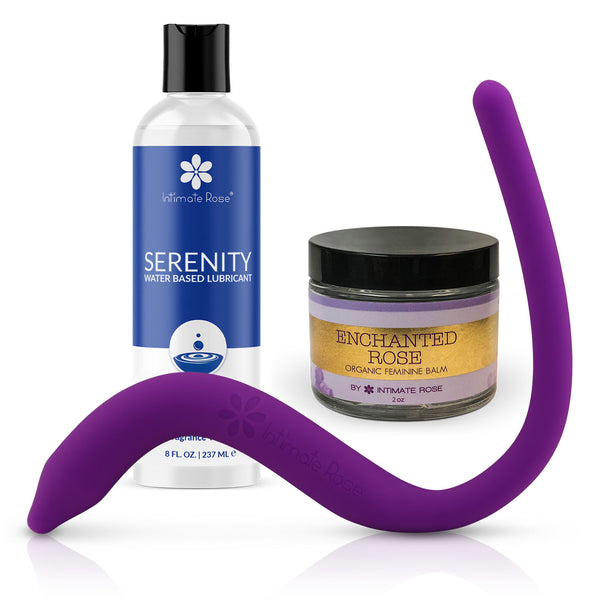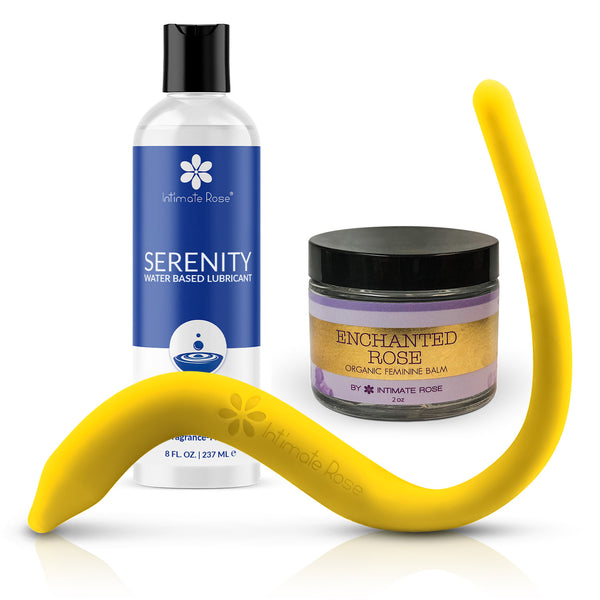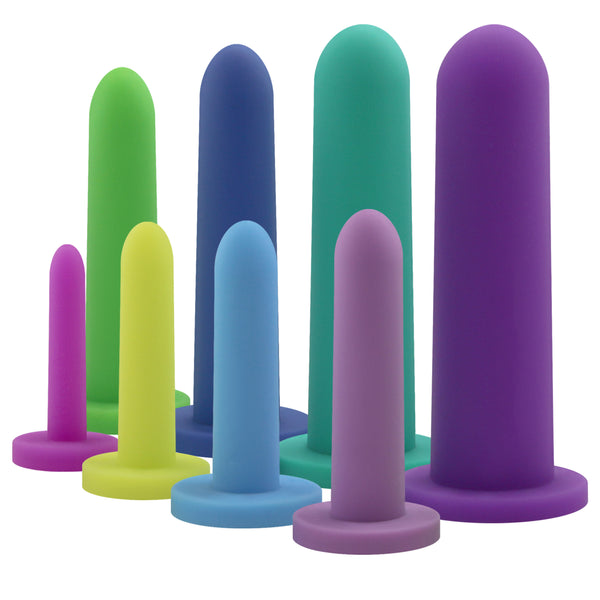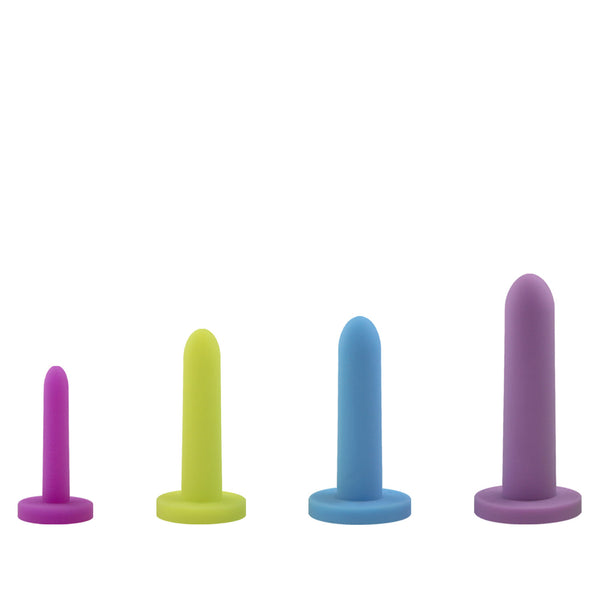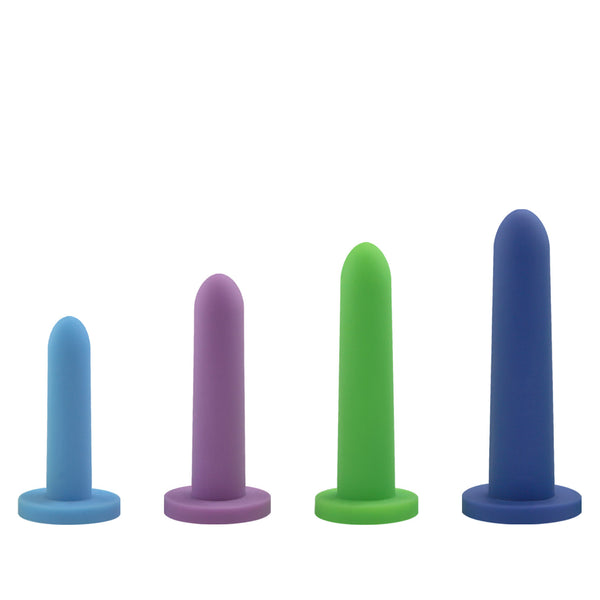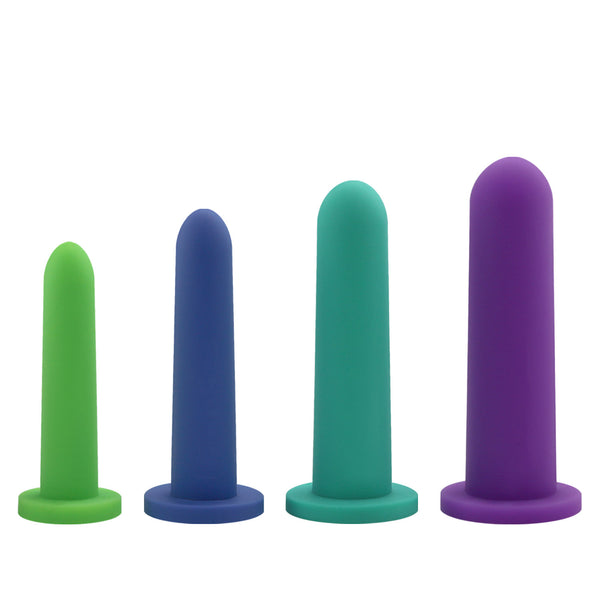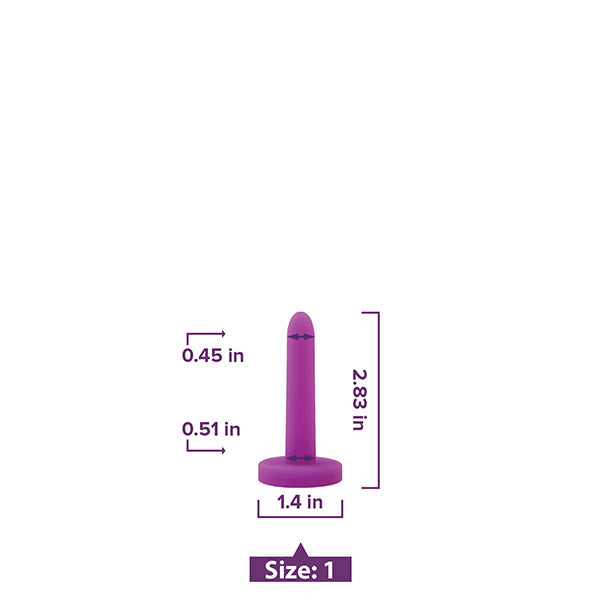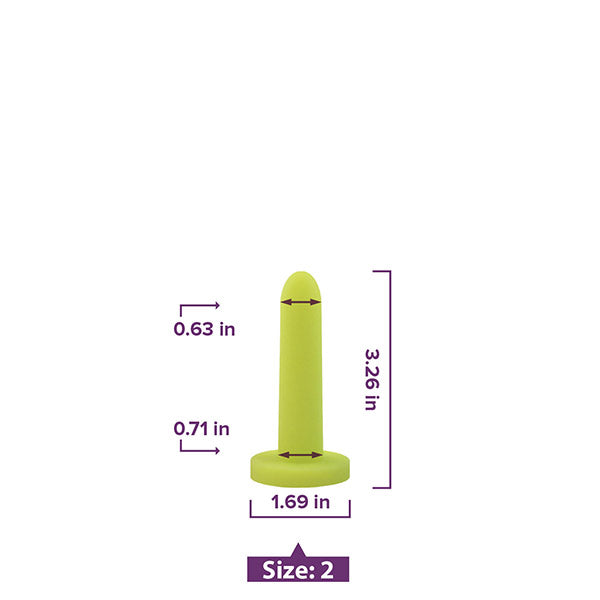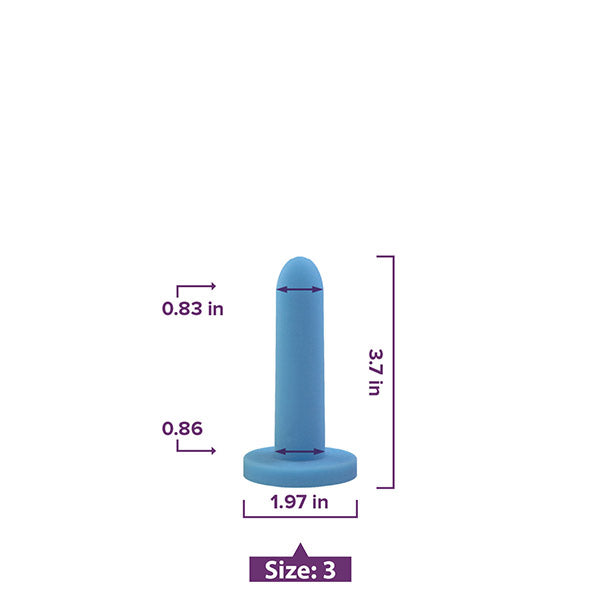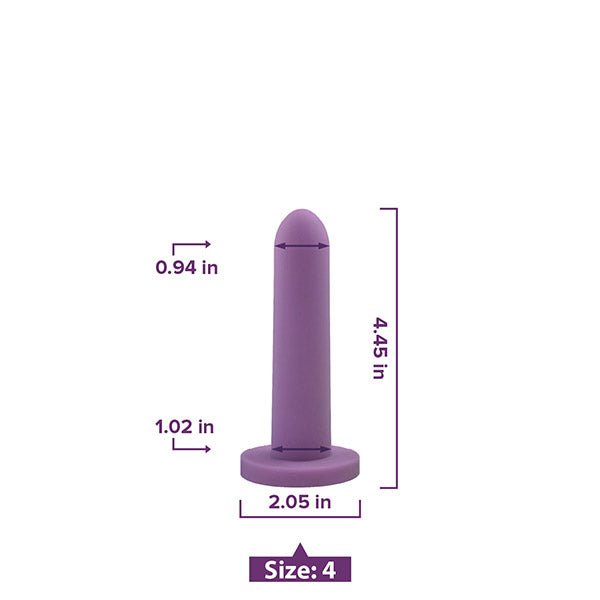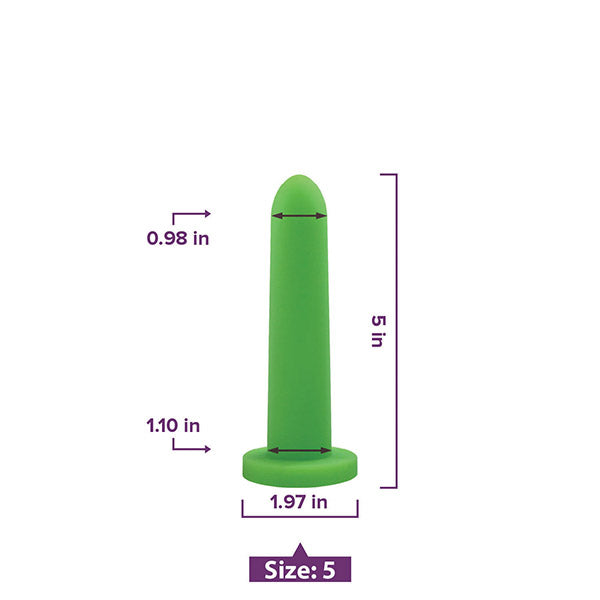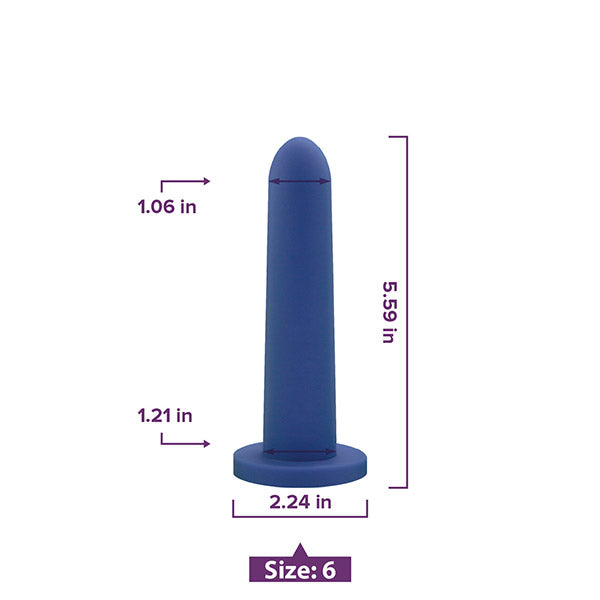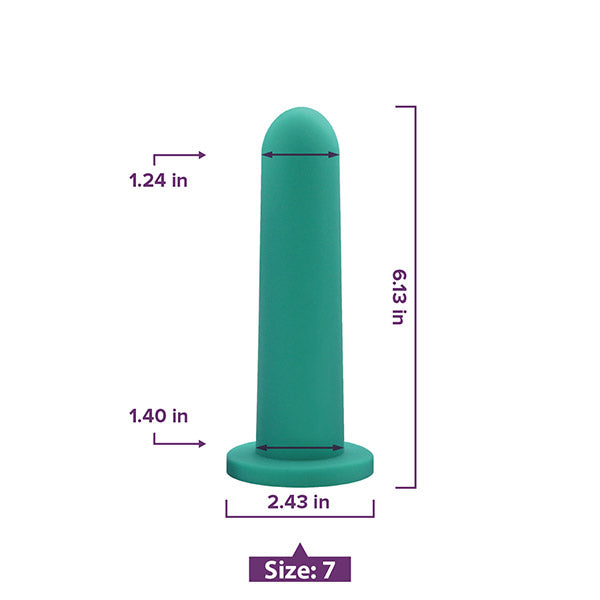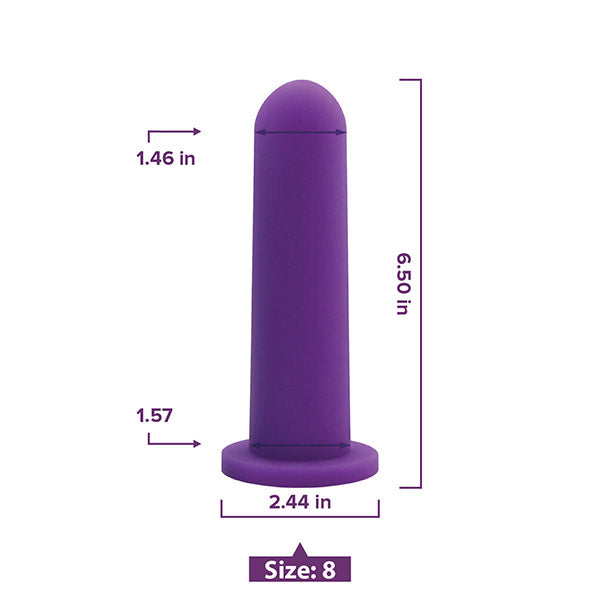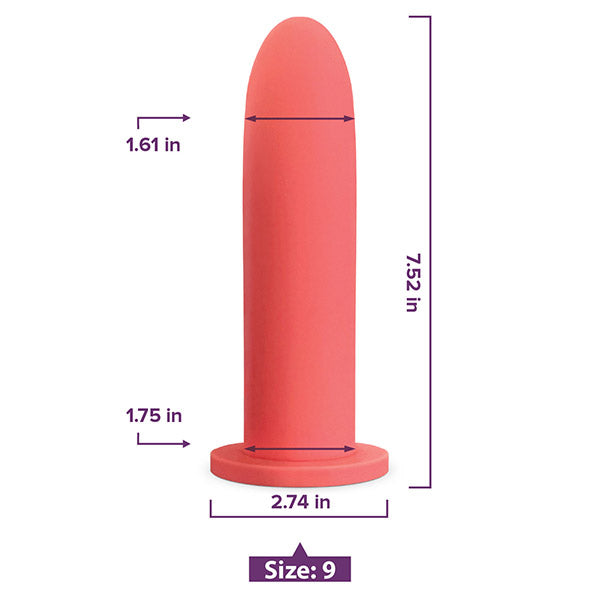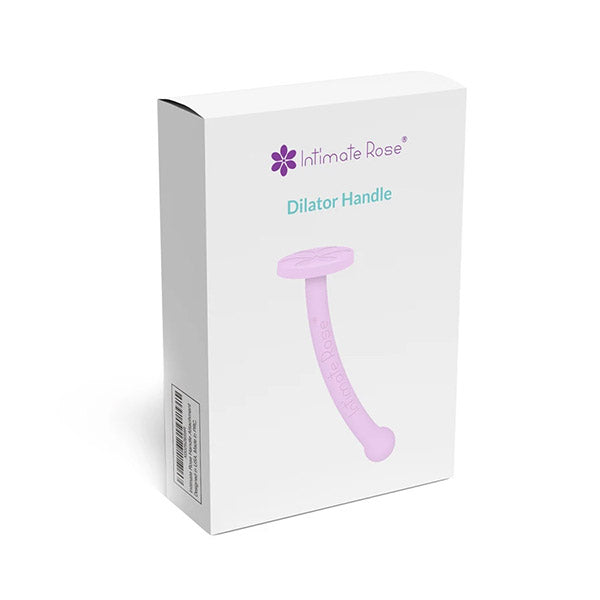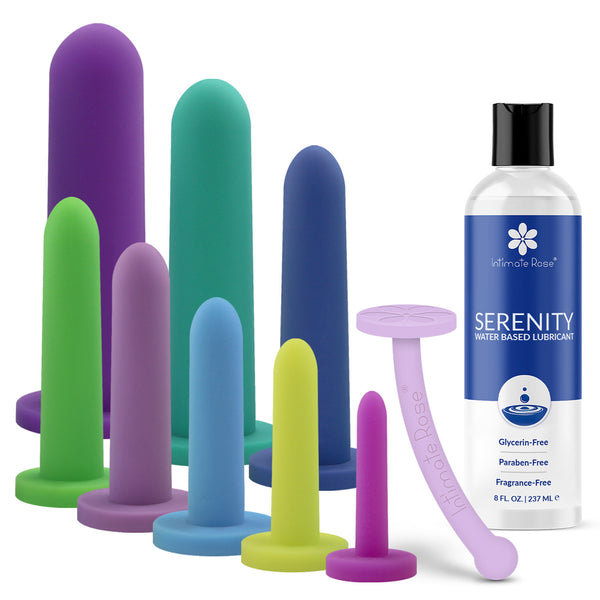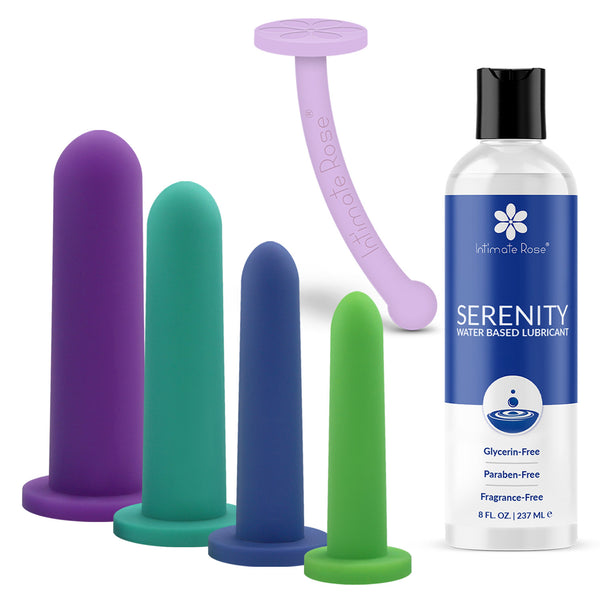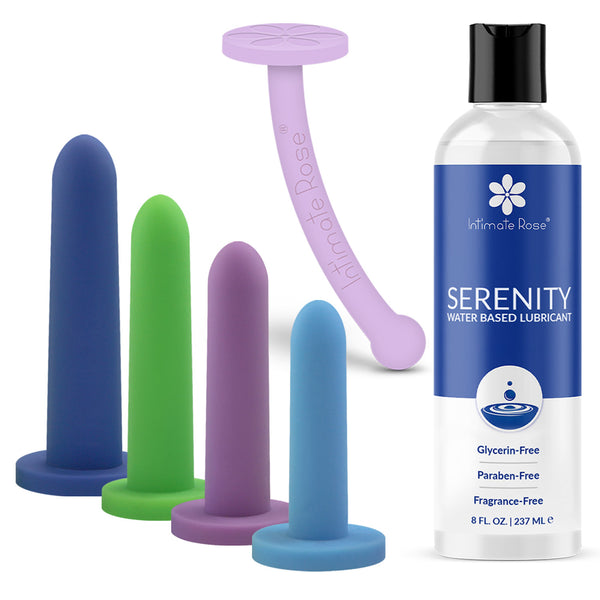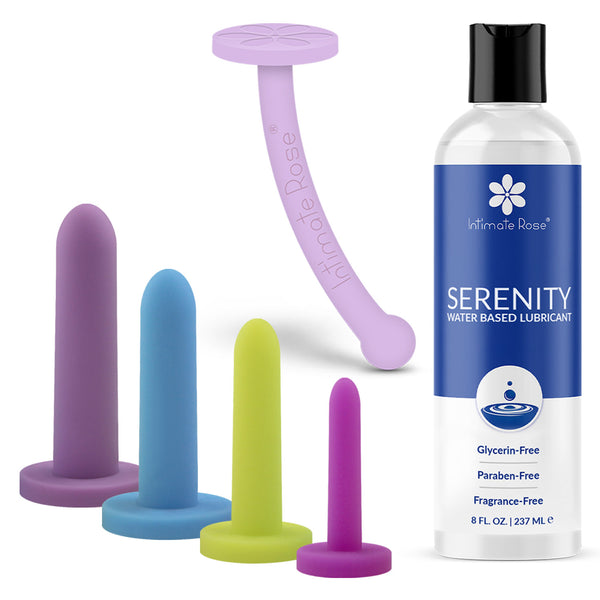The Perineum | Benefits | What You'll Need | How to
Performing a daily perineal massage in the last trimester of pregnancy has been proven to reduce the risk of tearing during birth (perineal tearing) and the need for an episiotomy, thereby resulting in less pain, a quicker delivery, and faster recovery after childbirth.
Particularly helpful for first-time mothers, expectant moms over 30, and those expecting to birth large babies, perineal massage is highly recommended from week 34 onward.
Below, we’ll explain how to do a perineal massage, how it can reduce pain & vaginal tearing during delivery, and a few tips and tools that can make massaging the perineum easier as your belly grows in the last trimester.
45-Min Online Pelvic Therapy Session, $99 
What is the Perineum and Where is It
Located between the anus and the opening of the vagina, the perineum is a thin layer of skin, nerves, and muscles that connect with the pelvic floor to protect and support the pelvic organs and aid in carrying out bodily functions like bladder and bowel movements.
During vaginal childbirth, the perineal skin and muscles must stretch considerably to allow the baby through the birth canal.
Why Perineal Massage is Important Before Giving Birth
Although the perineum naturally stretches during childbirth, it is not something that the perineal muscles are used to. Massaging the area from week 34 onward, however, is known to lead to several benefits during delivery. These include:
Less pain & Faster Delivery
Massaging any part of the body is known to improve circulation and increase blood flow to the muscles and skin in that area, and the same is true for the perineum.
Regular massages in the weeks leading up to delivery result in an increased blood flow to the perineal muscles. So, when the time comes to push, the perineal muscles can stretch more easily, resulting in less pain and faster delivery.
Less Perineal Tears and Episiotomies
Given that the perineal skin and muscles are typically taut to support the pelvic organs, splits or tears can occur as the perineum stretches during delivery. Known as perineal tears, they are categorized into four types with a first-degree tear being a minor split of the vaginal skin to a fourth-degree tear, which splits from the vaginal opening through the sphincter muscles to the rectal lining.
In addition, particularly with larger babies, the vaginal opening of a first-time mother is often not wide enough to allow the baby’s head or shoulders through. In this case, a midwife or doctor will perform an episiotomy, which is an incision that opens the perineum a little wider as the mother is pushing to help the baby exit more easily.
Although episiotomies are nothing serious, they require stitches after delivery and can increase the pain experienced in the days and weeks after childbirth.
Quicker Recovery
After childbirth, women who experience no tearing will generally experience some pain and inflammation in the perineum, but they usually recover fully within three weeks. Recovery time for women who have undergone an episiotomy, however, can take up to six weeks.
The more regularly perineal massage is performed (daily or at least three to four times per week is recommended), the more apparent the benefits will be.
What You Need to Perform a Perineal Massage
1. Fragrance Free Water Based Lubricant
Massaging the perineum is best performed with a non-fragranced water-based lubricant so as not to upset the natural pH balance in the vagina.
Read: Perineal Massage Oils: Which Are Safe to Use?
2. Clean Hands and Short Nails
Clean hands and short nails if using the thumbs and fingers to massage, otherwise a clean, body-safe vaginal dilator or pelvic wand, preferably made from medical-grade silicone.
3. Pillows
Pillows to support the upper body if performing the massage lying down on your back with legs open wide and knees bent. If it’s difficult to reach around the belly to the perineum some kneeling or standing positions can provide better access by reaching under one raised leg. Lying back in the bath with one leg resting on the side also works.
4. Warm Bath or Compress
A warm bath or a warm compress resting on the perineum can help to relax the perineal muscles before your massage.
5. Mirror
Using a mirror will help you to see what’s going on down there.
How to Do a Perineal Massage
Massaging the perineum before birth can be done on your own, with a pelvic wand, or with help from your partner. We will outline step-by-step instructions for all three methods below.
Bear in mind that perineal massage should not hurt or be painful, but it’s common to feel gentle pressure or a tingling sensation when stretching the perineum for the first few days. Think of it as being similar to hooking your fingers inside your mouth and gently stretching your lips in opposite directions.
Perineal Massage on Your Own
- Place your lubrication, pillows if required, and mirror within reach of where you will relax for your massage.
- Wash your hands with unscented soap and warm water before each massage and ensure your fingernails are short to prevent injuring the sensitive skin of the inner vagina.
- In a quiet part of your home, where you will not be interrupted, move into your favored position for perineal massage and place a warm compress on the perineum for a few minutes.
- Lubricate your perineum by gently rubbing unscented water-based lubrication from the lower part of the vagina to the anus. And place your mirror somewhere that allows you to see your perineum.
- Gently inhale and exhale a few times to relax, then imagining that your vaginal opening is a clock, place your left thumb or the first two fingers of the left hand approximately 2-4cm inside the vagina and begin to press against the left side of the vaginal wall to feel the initial stretch. Imagine this position as number 3 on a clock with the anus being number 6 and the clitoris number 12.
- Continue to exude this gentle pressure against the left vaginal wall and move the thumb or fingers toward the anus as if moving to position 6 on a clock.
- Repeat this massage from number 3 to number 6, with gentle pressure on the vaginal wall, 20-30 times before releasing the left hand.
- Then take the right thumb or first two fingers on the right hand and repeat the stretch on the right side of the vaginal wall, imagining moving from number 9 on a clock to number 6 and back up, 20-30 times, or for 5-10 minutes.
- As soon as you become used to the movement, you can use both thumbs at the same time, creating a U shape as they sweep from number 3 and 9 down to number 6.
- For best results, perineal massage should be performed every day or at least 3-4 times per week from week 34 onward.
Pelvic Wands
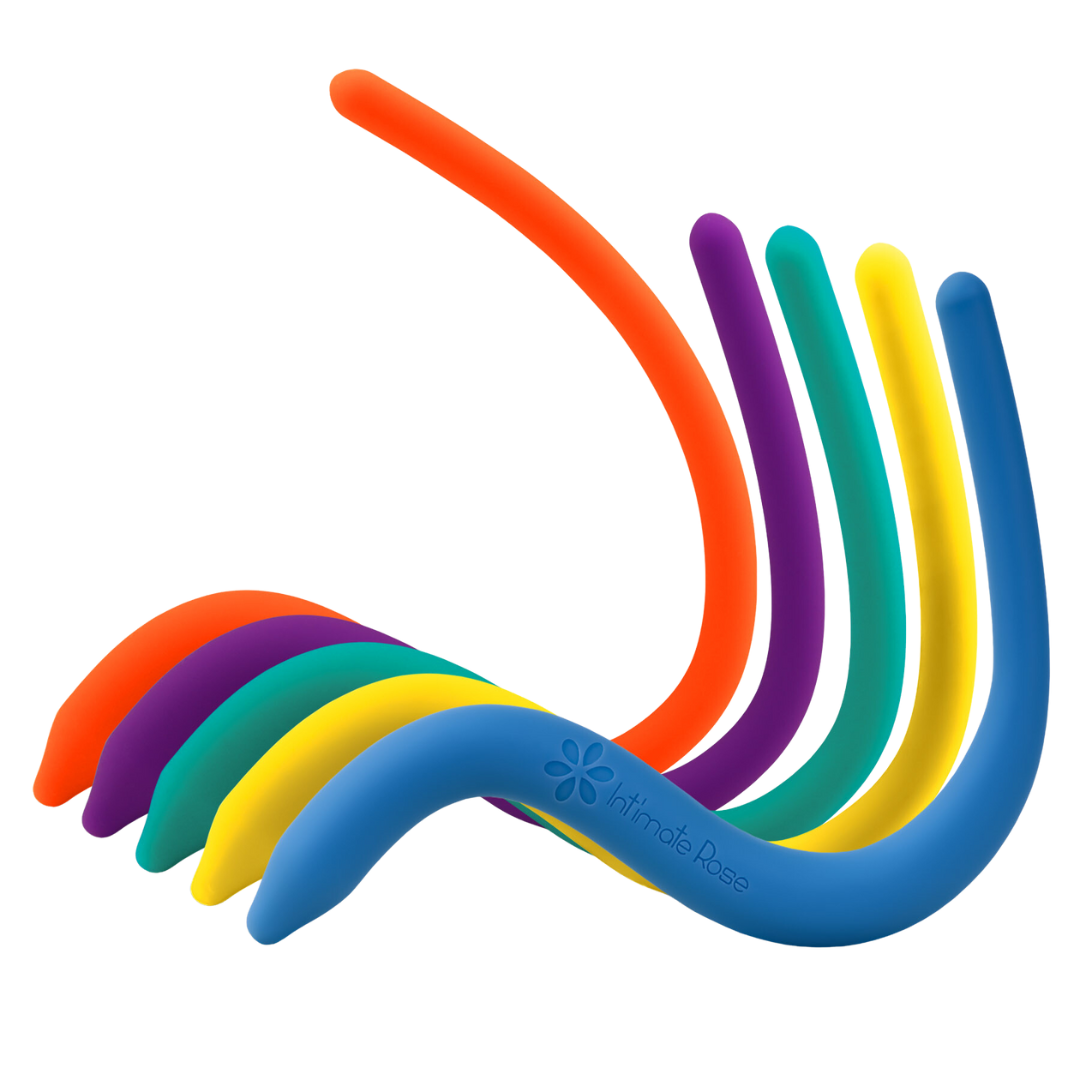
Perineal Massage from A Partner
Given the growing belly in the third trimester of pregnancy, it can be difficult to reach the perineum for many women. In these cases, some women are happy to allow their partner to carry out perineal massages before birth, while others find it embarrassing and prefer to use a pelvic wand (more on that below).
If you and your partner feel comfortable about them performing the perineal massage, make sure you explain the process in detail or share the step-by-step instructions with them before they begin.
- Gather your lubrication, support yourself with pillows, and relax with your legs open and knees bent.
- Ensure your partner washes their hands with unscented soap and warm water before each massage and that their fingernails are short to prevent injuring the sensitive skin of the inner vagina.
- Lie back, gently inhale and exhale a few times to relax, and trust your partner.
- For the utmost comfort, place a warm compress on your perineum for a few minutes before you begin.
- After the warm compress is removed, your partner can lubricate your perineum by gently rubbing unscented water-based lubrication from the lower part of the vagina to the anus. And they can also lubricate their thumb or first two fingers, depending on what they will use for the massage.
- Imagining that your vaginal opening is a clock, your partner can place the first fingers of both hands inside the vagina to position 3 and 9 of the clock. They can insert the fingers 2-4cm or as far as the second knuckles.
- Gently pressing the fingers against each side of the vaginal wall at positions 3 and 9 on the clock, your partner can then begin to move toward the anus or number 6 on the clock, and back up to positions 3 and 9, making a U motion.
- Repeat 20-30 times, or continue to massage in the U motion for 5-10 minutes at least 3-4 times per week.
- Once the massage feels comfortable with one finger, your partner can being to use two fingers on either side to further relax the perineal muscles.
Perineal Massage with Massage Tool
A quality perineal massage tool is great if you find it difficult to reach your perineum during the third trimester and you don’t feel comfortable asking your partner to perform your massage. Whether you use a dilator or pelvic wand, they can give you an extra few inches of reach and work just as well, if not better, than your thumbs or fingers.
Although dilators and wands are made from a few different materials, medical-grade silicone is considered the safest and most comfortable for sensitive vaginal skin.
Vaginal dilators also come in ascending sizes, which can be helpful when it comes to massaging the perineum – essentially starting with a smaller size (similar to one finger) and moving to the next (similar to two fingers) once comfortable.
To use a vaginal dilator or pelvic wand for perineal massage, follow these step-by-step instructions.
- Place your lubrication, pillows if required, and mirror within reach of where you will relax for your massage.
- Ensure your dilator or pelvic wand is washed with unscented soap and warm water before and after each use.
- Place a warm compress on the perineum for a few minutes to allow the muscles to relax.
- Lubricate your vaginal opening and perineum by gently rubbing unscented water-based lubricant from the vagina to the anus, and smear some lubricant on the dilator or wand too for easier insertion.
- Find your favored position for your perineal massage and while using your mirror for guidance, insert the tip of the vaginal dilator or pelvic wand approximately 2-4cm into the vagina.
- Imagining your vaginal opening as a clock, with number 6 at the anus and number 12 toward the clitoris, press the tip of the dilator or wand toward number 6 and hold it there for 30-60 seconds. You will likely feel some tingling as the perineal muscles stretch, but if you feel any pain you may be pressing too hard. Think of the pressure as similar to pressing on a tomato without splitting it.
- With gentle pressure against the wall of the vagina, move the dilator or pelvic wand up toward where the number 3 would be on the clock, back down to number 6, and up the other side of the vagina toward number 9. Essentially moving the dilator or wand in a U shape to apply a gentle massage.
- Repeat 20-30 times every day, or at least 3-4 times per week to avoid perineal tearing or episiotomies during childbirth.
Conclusion
When it comes to childbirth, the female body prepares itself in several ways, including vaginal changes and the release of hormones to relax the hip joints, birth canal, and pelvic muscles. Despite these natural preparations, however, statistics show that vaginal tears, or perineal lacerations, are common during delivery for first-time mothers and when giving birth to large babies.
To avoid vaginal tearing during birth, we’ve outlined step-by-step instructions above on how to do a perineal massage on your own, with your partner, or using massage tools like a vaginal dilator or pelvic wand. Visit our our guide for more perineal massage questions!
FAQs
What is perineal massage?
Perineal massage involves the gentle stretching and massaging of the perineal tissues to increase their flexibility. This practice is often recommended during the final weeks of pregnancy to help reduce the risk of perineal trauma during childbirth.
What are the benefits of perineal massage?
Perineal massage can lead to increased tissue elasticity, a reduced risk of perineal trauma during childbirth, and decreased postpartum discomfort. Some studies suggest it may lower the need for episiotomies.
When should I start perineal massage during pregnancy?
It's generally recommended to begin perineal massage around the 34th week of pregnancy, practicing it several times a week until delivery. Consult with your healthcare provider before starting to ensure it's appropriate for your situation.
How do I know if I am doing perineal massage correctly?
You’re doing it correctly if you’re applying gentle pressure with your thumbs to stretch the perineum downward and to the sides. There may be mild discomfort but not pain. Consult with a pelvic floor therapist if you’re unsure about your technique.
What oil can I use to do perineal massage?
Safe options for perineal massage include natural, plant-based oils like coconut oil, avocado oil, jojoba oil, grapeseed oil, and vitamin E oil. You can also use a 100% natural, water-based lubricant like Velvet Rose by Intimate Rose, which is non-irritating and maintains a healthy vaginal pH balance.
What is the best lubricant for perineal massage?
A toxin-free, water-based lubricant like Velvet Rose by Intimate Rose is ideal for perineal massage. It’s made with 100% natural ingredients, maintains a healthy vaginal pH, and is gentle on sensitive skin.
References
Cleveland Clinic – The Perineum - https://my.clevelandclinic.org/health/body/24381-perineum
American Pregnancy Association - Perineal Massage During Pregnancy - https://americanpregnancy.org/healthy-pregnancy/labor-and-birth/perineal-massage-pregnancy/
American Journal of Obstetrics & Gynecology - https://www.ajog.org/article/S0002-9378(99)70260-7/fulltext
National Library of Medicine - Effect of Perineal Massage on the Rate of Episiotomy - https://www.ncbi.nlm.nih.gov/pmc/articles/PMC7072029/
Science Direct – Perineal Massage - https://www.sciencedirect.com/topics/medicine-and-dentistry/perineal-massage

45-Min Online Pelvic Therapy Session, $99




